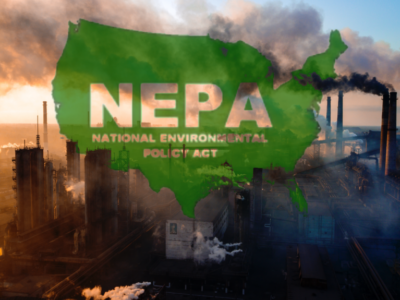The New EPA Car Rule Doesn’t Violate the Major Questions Doctrine
They both relate to climate, but West Virginia v. EPA involved a very different regulation raising very different issues.
In West Virginia v. EPA, the Supreme Court struck down the Obama-era Clean Power Plan. The heart of the ruling was that EPA had engaged in a power grab, basing an unprecedented expansion of its regulatory authority on an obscure provision of the statute. Conservative groups have claimed since then that virtually every government regulation raises a major question. But the doctrine cannot be read that broadly.
In particular, the doctrine does not apply to the emission standards for cars that EPA issued yesterday. As EPA explains in its prologue to the rule, the car standard is very different from the Clean Power Plan.
In striking down the Clean Power Plan, the Supreme Court pointed to several factors: the statutory provision in question was obscure and rarely used; EPA’s expertise is pollution, not the power grid; states, not the federal government, decide what types of power generation to build; and the President had previously tried but failed to get legislation of similar import. None of these apply to the new car rule:
- The new rule is based on a legal provision that EPA has applied for decades to regulate cars, rather than an obscure and rarely used legal provision.
- The per-vehicle compliance cost is well within the range of previous EPA car regulations.
- EPA has decades of experience and expertise regarding vehicle technology.
- The rule is not unprecedented. EPA had previously considered electric vehicles as a way of reducing pollution.
- The standard does not mimic previous legislation rejected by Congress.
These differences would strike me as decisive, but I would also emphasize three other important differences between the regulation and the Clean Power Plan:
First, the Clean Power Plan was qualitatively different from previous EPA regulations, not just different in degree. There’s no such thing as a hybrid wind/coal power plant. The distinction between renewables and fossil fuel generation is stark, and EPA had not previously tried to dictate a utility’s energy source. But there is a progression from conventional hybrids, where batteries reduce gas use; to plug-in hybrids, where the battery can run the car for shorter trips; to pure EVs that always run on battery. Thus, while EPA crossed a clearcut line in the Clean Power Plan, it has not done so in the car rule.
Second, there was a tight link between the Clean Power Plan and reductions in coal because replacing the use of coal was the only feasible way to cut CO2 emissions from coal plants. But the linkage is a lot looser under the car standards. EPA also modeled non-EV approaches that could be used to meet the standard, so switching to electric power is not the only form of compliance.
Notably, EPA points out that in the past, carmakers have unexpectedly found ways to comply with standards while retaining reliance on gasoline.
“Looking specifically at electrification technologies, start-stop systems were projected at 45 percent and were used in 10 percent of vehicles, while strong hybrids were projected to be 6.5 percent of the MY 2016 fleet and were actually only 2 percent. Notwithstanding these differences between EPA’s projections and actual manufacturer decisions, the industry as a whole was not only able to comply with the standards during the period of those standards (2012-2016), but to generate substantial additional credits for overcompliance.” [p. 175 of the pre-Fed. Reg. version of the rule]
Thus, while the Clean Power Plan directly managed the fuel mix of utilities, the connection between the rule and automotive power sources is much more flexible.
Third, the Inflation Reduction Act and the Infrastructure Law both include billions of dollars relating to electric vehicles. In fact, Congress required EPA to include projected growth of EVs in its modeling for new regulations. In short, Congress seems fully on board with shifting the industry away from gas cars toward EVs. Congress actually has made the basic policy judgment rather than EPA grabbing authority in face of congressional opposition.
Fourth, unlike the Clean Power Plan, this regulation is not just about greenhouse gases and climate change. It also applies to conventional air pollutants – the same pollutants that EPA has regulated since the Clean Air Act was passed in 1970. Climate change strengthens the argument on behalf of the new standards. But even if EPA had never had jurisdiction over greenhouse gases, it would still find EVs a promising way to clean up the air.
The bottom line is that yesterday’s new regulations for car emissions are much more a variation on a familiar theme than a sharp departure from past practice. That distinguishes the new regulation from the Clean Power Plan and should also take the Major Questions Doctrine off the table.







Reader Comments